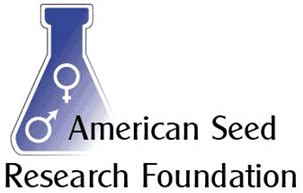Alexandria, Virginia, USA
March 26, 2009
 In
1959, the members of the
American Seed Trade Association
(ASTA) recognized the changing dynamics In
1959, the members of the
American Seed Trade Association
(ASTA) recognized the changing dynamics
of agriculture and the seed industry. ASTA forged new ground in
all areas from moving their headquarters from Chicago to
Washington, DC, to the inception of the American Seed Research
Foundation (ASRF). The advances in research and the innovation
of the 1950s and 1960s laid the foundation for what was later
called the "Green Revolution" which delivered hardy and high
yielding seeds to feed the growing and often impoverished people
around the world.
ASTA remained closely involved with scientific study and
advances during these times, and in 1959, the American Seed
Research Foundation (ASRF) first opened its doors, starting what
would become a 50-year success story. The foundation's primary
purpose was to promote research in plant and seed technology
that would benefit seed companies, farmers and consumers.
Basic research in seed science takes considerable investment in
resources and time. Most basic research can not be justified for
the individual company, regardless of its size. State and
federal experiment stations do some basic research in the area
of seed science, but funding and facilities are limited and
often prioritized to other activities. One way to increase the
knowledge in seed sciences is for the seed industry to directly
offer financial support to specific projects to enhance the
publicly available information on seed growth and development to
be utilized by all in seed research and innovation.
The efforts of ASRF have adapted and grown over time, but the
mission remains committed to encouraging research in plant and
seed biology and to facilitate the transfer of resulting
technology to benefit the seed industry, farmers and consumers
on a global basis. ASRF has seen many successes in its 50 years.
The foundation has funded 54 project proposals. The total
investment of ASRF in support of basic seed research has
exceeded $800,000. These funds stimulated other sources of
research support, with a three to one multiplier effect, adding
another $2.5 million of matching funds provided by other
cooperating organizations. ASRF funds have been distributed to
32 public institutions and supported 69 individual seed
researchers.
"The American Seed Research Foundation has been the catalyst for
encouraging investment in basic plant and seed biology research
for over 50 years," said Rob Robinson, past ASRF president.
"With a 3 to 1 multiplier on dollars invested, ARSF funded
research has had a major impact on our understanding of why
plants behave as they do. ASRF members, the seed industry and
society at large have all greatly benefited from the good work
of ASRF."
ASRF has expanded its activities to reach deeper into the
research community through various initiatives. Operation
Student Connection (OSC) is an outreach program begun as a part
of the "Re-Energyzing ASRF" strategic planning activities of
2000, which included education as one leading component of ASRF
efforts. ASRF will assist and encourage graduate students
majoring in seed biology or seed science and technology to
attend and participate in ASTA's annual convention, thereby
sharing valuable insight into the private sector of the seed
industry and establishing personal contact with members of the
seed trade. Students that have been selected to participate in
OSC may have the opportunity to apply for the Roger Krueger
Memorial Scholarship, directed toward students in agriculture -
the future of the seed industry.
ASRF, in partnership with ASTA and the National Council of
Commercial Plant Breeders (NCCPB), held the first American Seed
Research Summit on Sept. 25-26, 2008, in Chicago, Ill. The
summit brought together leaders in public and private sector
seed research to outline a strategic plan to help address the
various hurdles facing seed research - training and education,
funding, research trends, prioritization and public-private
partnerships. Finding solutions and providing resourceful
partnerships is critical because seed innovation and technology
play a vital role in meeting the growing demand for food, feed,
fiber and fuel. Robinson remarked that the first American Seed
Research Summit was a resounding success. "Some of the brightest
research leaders in industry, government and academia
participated in creating an action plan that promises to move
American seed research forward dramatically in the years to
come."
ASRF also has the legal and administrative structure to disperse
such tax deductible contributions that would support research
which is aimed at specific segments of the seed industry
represented by the various ASTA divisions. In 1991, ASRF assumed
responsibility for the administration of the Vegetable & Flower
Permanent Research Fund, the Corn Permanent Research Fund, the
Soybean Permanent Research Fund and the Fruit Blotch Ad Hoc
Research Fund.
ASRF will commemorate its golden anniversary at the 2009 ASRF
Annual Meeting held in conjunction with ASTA's 126th Annual
Convention in June. Associate Professor Hiro Nonogaki
specializes in seed biology at Oregon State University and will
speak at the ASRF Annual Meeting. For more information, please
visit the
convention Web site. |
|